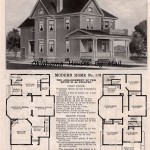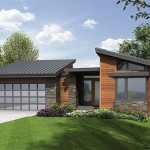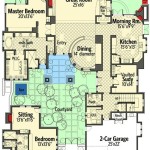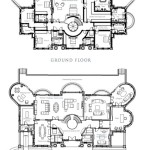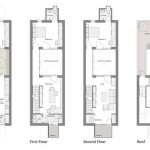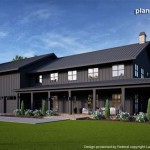Drawing House Plan, also known as House Plan Drawing, refers to the detailed and precise representation of a house’s design and layout. It serves as a comprehensive guide for constructing or renovating a residential building, providing blueprints and schematics that outline the structure’s dimensions, materials, and various components.
A House Plan Drawing is an essential tool for architects, engineers, and contractors to visualize and plan every aspect of a house. These plans are composed of floor plans, elevations, sections, and details that specify the size, shape, and form of every room, doorway, window, and feature within the house. For instance, a floor plan displays the layout of each level, indicating the placement of walls, doors, and windows, while an elevation drawing provides a vertical view of the house’s exterior, showcasing its facade, roofline, and overall aesthetics.
Now that we have established the basic principles of a Drawing House Plan, let us delve into the specifics of its construction and interpretation.
Drawing House Plans involves several key points that ensure clarity and accuracy in representing the design and layout of a house. These points are crucial for effective communication between architects, engineers, contractors, and homeowners.
- Accurate Measurements
- Clear Symbols and Notations
- Detailed Floor Plans
- Precise Elevations
- Cross-Sections for Clarity
- Material Specifications
- Compliance with Building Codes
- Professional Presentation
Adhering to these points ensures that Drawing House Plans serve as reliable guides for constructing or renovating a house, minimizing errors and ensuring a smooth execution of the project.
Accurate Measurements
Accurate measurements are the cornerstone of Drawing House Plans, ensuring that the constructed or renovated house aligns precisely with the architect’s design and meets the homeowner’s specifications. Without precise measurements, even minor deviations can lead to costly mistakes and structural issues.
- Measurements of Walls and Rooms
Precise measurements of walls and rooms are critical for determining the overall dimensions of the house and the placement of interior features such as doors, windows, and built-in cabinetry. Accurate measurements ensure that each room is the desired size and shape, and that there is sufficient space for furniture and circulation.
- Location of Doors and Windows
The location of doors and windows must be carefully measured to optimize natural light, ventilation, and views. Accurate measurements ensure that doors and windows are placed in the most suitable positions for each room’s function and aesthetics.
- Height of Ceilings and Roof
The height of ceilings and the roof pitch directly impact the overall proportions and volume of the house. Accurate measurements are essential to ensure that the house has the desired spaciousness and meets ergonomic requirements.
- Structural Components
The dimensions and placement of structural components, such as beams, columns, and load-bearing walls, must be precisely measured to ensure the stability and safety of the house. Accurate measurements prevent structural issues and potential hazards.
Overall, accurate measurements in Drawing House Plans are paramount for constructing or renovating a house that meets the design intent, functional requirements, and safety standards.
Clear Symbols and Notations
Clear symbols and notations are essential in Drawing House Plans for effective communication and accurate interpretation of the design. Standardized symbols and notations convey specific information about the building’s components, materials, and construction details. This clarity minimizes errors and ensures that everyone involved in the project has a shared understanding of the plans.
Standardized Symbols
Drawing House Plans utilize a standardized set of symbols to represent various building elements. These symbols are universally recognized and understood by architects, engineers, and contractors. For instance, a rectangle with a diagonal line represents a door, a circle indicates a window, and a series of parallel lines depict a wall.
Notations and Dimensions
In addition to symbols, notations and dimensions provide further clarity to Drawing House Plans. Dimensions specify the precise measurements of walls, rooms, and other features. Notations convey additional information, such as the type of materials used, the load-bearing capacity of walls, and the location of electrical and plumbing fixtures. Clear and concise notations ensure that the plans are unambiguous and easy to follow.
Material Specifications
Drawing House Plans often include material specifications that indicate the type of materials to be used for different building components. These specifications may include the grade of concrete, the type of roofing material, and the finish for interior walls. By specifying the materials, the plans provide a clear guide for the selection and procurement of building materials.
Compliance with Building Codes
Clear symbols and notations also help ensure compliance with building codes and regulations. Building codes establish minimum standards for the design and construction of buildings, and Drawing House Plans must adhere to these codes to obtain building permits and ensure the safety and habitability of the house.
Overall, clear symbols and notations in Drawing House Plans facilitate effective communication, accurate interpretation, and compliance with building codes. They provide a universal language that enables architects, engineers, contractors, and homeowners to work together seamlessly to construct or renovate a house that meets the desired design and functional requirements.
Detailed Floor Plans
Detailed Floor Plans are the cornerstone of Drawing House Plans, providing a comprehensive overview of each level of the house, including the layout of rooms, walls, doors, windows, and other features. They serve as a blueprint for the construction or renovation of the house, ensuring that all elements are properly positioned and proportioned.
Floor Plans are typically drawn to scale, allowing for accurate measurements and calculations. They include precise dimensions for walls, rooms, and openings, ensuring that the house meets the desired size and spatial requirements. Detailed Floor Plans also indicate the location of stairs, fireplaces, built-in cabinetry, and other fixed elements.
In addition to the layout of rooms and features, Floor Plans provide valuable information about the flow of the house. They show how different spaces connect and relate to each other, ensuring a smooth and functional circulation throughout the house. By carefully planning the arrangement of rooms, hallways, and doorways, architects can optimize the use of space and create a comfortable and inviting living environment.
Detailed Floor Plans also serve as a basis for other drawings and calculations required for the construction process. They are used to determine the amount of materials needed, such as flooring, drywall, and roofing. Additionally, Floor Plans are essential for calculating the square footage of the house, which is a key factor in determining its value and property taxes.
Overall, Detailed Floor Plans are an indispensable part of Drawing House Plans, providing a comprehensive and accurate representation of the layout and design of each level of the house. They are essential for ensuring the proper construction or renovation of the house, optimizing space utilization, and meeting the functional and aesthetic requirements of the occupants.
Precise Elevations
Precise Elevations are essential drawings in Drawing House Plans, providing a detailed and accurate representation of the exterior appearance of the house from different sides. Elevations are vertical projections that show the height, width, and depth of the house, as well as the placement and dimensions of windows, doors, and other exterior features.
Elevations are typically drawn to scale, ensuring precise measurements and proportions. They include details such as the roof pitch, the height of windows and doors, the location of balconies and porches, and the overall shape and form of the house. Accurate Elevations are crucial for visualizing the house’s external appearance and ensuring that it aligns with the desired architectural style and aesthetic.
In addition to providing a visual representation, Elevations also serve as a guide for the construction process. They indicate the materials to be used for the exterior walls, the type of roofing, and the placement of exterior fixtures and finishes. By carefully detailing the exterior design, Elevations help ensure that the house is constructed according to the architect’s vision and meets the homeowner’s expectations.
Furthermore, Precise Elevations are essential for obtaining building permits and ensuring compliance with local building codes. Building codes often specify requirements for the height, setbacks, and overall appearance of buildings. By providing accurate Elevations, architects can demonstrate that the house design meets these requirements and is suitable for the intended location.
Overall, Precise Elevations are an indispensable part of Drawing House Plans, providing a comprehensive and accurate representation of the exterior appearance of the house. They are essential for visualizing the house’s design, guiding the construction process, and ensuring compliance with building codes.
Cross-Sections for Clarity
Cross-Sections are specialized drawings used in Drawing House Plans to provide a detailed and accurate representation of the interior structure and components of the house. They are vertical slices through the house that reveal the relationships between different floors, rooms, and structural elements.
Cross-Sections are typically drawn to scale, ensuring precise measurements and proportions. They show the height of ceilings, the thickness of walls, the location of beams and joists, and the placement of mechanical systems such as HVAC ducts and plumbing pipes. By providing this detailed information, Cross-Sections help architects and builders visualize the three-dimensional structure of the house and ensure that all components fit together seamlessly.
Cross-Sections are particularly useful for complex architectural designs or renovations that involve multiple levels or intricate structural elements. They allow architects to communicate their design intent clearly and to identify potential issues or conflicts before construction begins. By carefully examining Cross-Sections, builders can develop a better understanding of the house’s structure and plan the construction process more efficiently.
In addition to their practical applications, Cross-Sections can also serve as a powerful visualization tool for homeowners. They provide a clear and concise representation of the house’s interior layout and can help homeowners understand the spatial relationships between different rooms and areas. Cross-Sections can also be used to showcase unique design features or highlight the use of specific materials and finishes.
Overall, Cross-Sections are an essential part of Drawing House Plans, providing a comprehensive and accurate representation of the interior structure and components of the house. They are invaluable for architects, builders, and homeowners alike, ensuring that the house is constructed according to the design intent and meets the functional and aesthetic requirements of the occupants.
Material Specifications
Material Specifications are a critical component of Drawing House Plans, providing detailed information about the materials to be used in the construction or renovation of the house. These specifications ensure that the house is built according to the architect’s design intent and meets the desired aesthetic, functional, and performance requirements.
- Type and Grade of Materials
Material Specifications clearly define the type and grade of materials to be used for various components of the house, such as concrete, bricks, wood, roofing, and finishes. The grade of a material indicates its quality and performance characteristics, ensuring that the materials meet the required strength, durability, and aesthetic standards.
- Finishes and Fixtures
Material Specifications also specify the finishes and fixtures to be used throughout the house, including flooring, countertops, cabinetry, appliances, and lighting. These specifications ensure that the house has a cohesive and well-appointed interior that meets the homeowner’s taste and lifestyle.
- Compliance with Building Codes
Material Specifications must comply with applicable building codes and regulations. Building codes establish minimum standards for the quality and safety of building materials, ensuring that the house meets the required performance and durability criteria.
- Sustainability Considerations
Increasingly, Material Specifications include considerations for sustainability and environmental impact. Architects and homeowners may specify materials that are energy-efficient, recycled, or sustainably sourced, contributing to a greener and more environmentally responsible building.
Overall, Material Specifications are an essential part of Drawing House Plans, ensuring that the house is constructed using the appropriate materials and finishes to meet the desired design intent, functional requirements, and building codes. By carefully specifying the materials, architects and homeowners can create a house that is not only beautiful and comfortable but also durable, safe, and sustainable.
Compliance with Building Codes
Compliance with Building Codes is a critical aspect of Drawing House Plans, ensuring that the design and construction of the house adhere to established regulations and standards. Building codes are enforced by local authorities to protect the health, safety, and welfare of the occupants and the general public.
Building codes specify minimum requirements for the structural integrity, fire safety, energy efficiency, and accessibility of buildings. They regulate aspects such as the strength of building materials, the size and placement of windows and doors, the installation of smoke detectors and fire sprinklers, the insulation of walls and roofs, and the provision of ramps and elevators for accessibility.
Architects and builders must carefully review and adhere to building codes when creating Drawing House Plans. Failure to comply with building codes can result in costly delays, fines, or even the inability to obtain a building permit. By ensuring compliance, architects and builders can demonstrate that the house design meets the required safety and performance standards.
Building codes also play a vital role in promoting sustainability and energy efficiency in buildings. Many building codes now incorporate green building practices, such as requiring the use of energy-efficient appliances and fixtures, and encouraging the installation of renewable energy systems. By complying with building codes, architects and homeowners can contribute to a more sustainable built environment.
Overall, Compliance with Building Codes is essential in Drawing House Plans to ensure the safety, functionality, and sustainability of the house. By adhering to building codes, architects and builders can create houses that meet the required standards and provide a safe and comfortable living environment for the occupants.
Professional Presentation
Professional Presentation is of paramount importance in Drawing House Plans, as it directly impacts the clarity, accuracy, and overall quality of the plans. A well-presented House Plan not only conveys the design intent effectively but also facilitates efficient communication and collaboration among architects, engineers, contractors, and homeowners.
One key aspect of Professional Presentation is the use of clear and consistent drafting standards. These standards include the use of appropriate line weights, symbols, and notations, as well as the proper organization and layout of the drawings. Adhering to established drafting standards ensures that the plans are easy to read and interpret, minimizing the risk of errors and miscommunications.
Another important aspect of Professional Presentation is the use of high-quality materials and printing techniques. The paper used for the plans should be of good quality, with a smooth surface that allows for clear and precise lines. The printing process should be of high resolution to ensure that the details of the plans are sharp and legible. By using high-quality materials and printing techniques, architects can create plans that are both aesthetically pleasing and durable.
In addition to the technical aspects of presentation, Professional Presentation also involves effective communication of the design intent. The plans should clearly convey the architect’s vision for the house, including the spatial relationships between different rooms, the flow of circulation, and the overall aesthetic of the house. Architects can use notes, annotations, and even 3D renderings to supplement the drawings and provide additional clarity.
Overall, Professional Presentation is an essential aspect of Drawing House Plans, ensuring that the plans are clear, accurate, and visually appealing. By adhering to drafting standards, using high-quality materials, and effectively communicating the design intent, architects can create House Plans that are both functional and aesthetically pleasing, facilitating a smooth and successful construction process.










Related Posts

